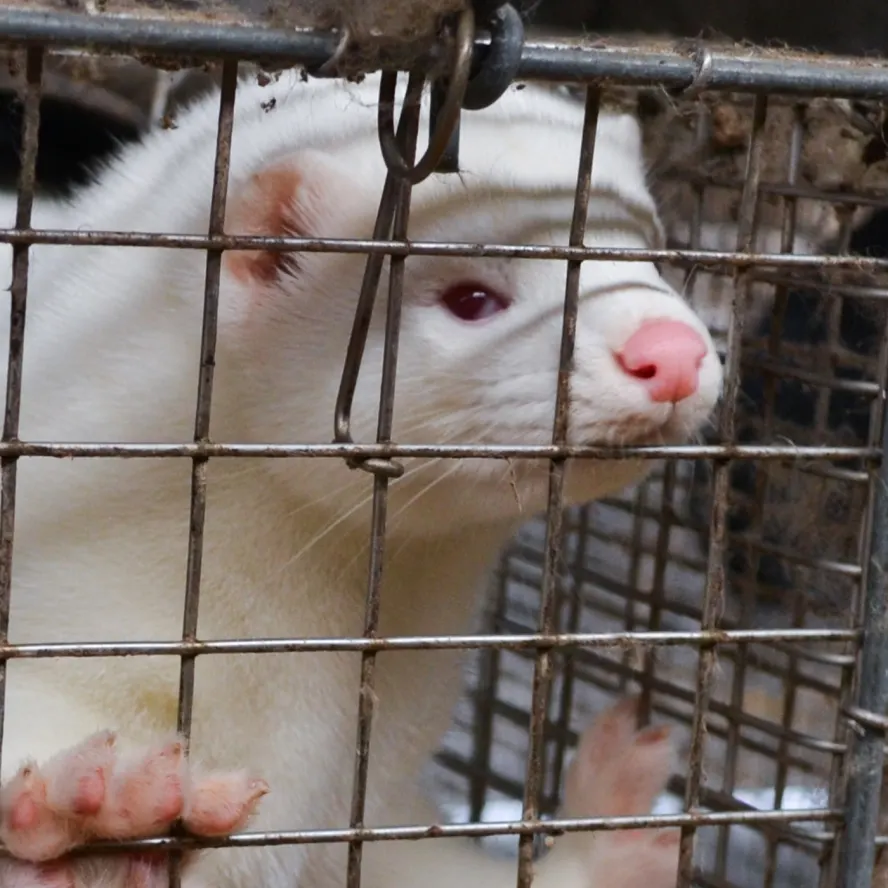- Fur Free Alliance. Fur Farming. Website last accessed 2025-06-04.
- Saga Furs. Saga Furs September auction, reports and stock exchange releases 2022. Website last accessed 2025-06-04.
- European Commission. Environment. Invasive alien species. Website last accessed 2025-06-04.

Fur-free trade
In the fur industry, animals are bred and killed simply because people want to wear their fur. Some of the fur imported into Europe comes from animal husbandry that is not legal here. It doesn't have to be that way. Project 1882 is working to dismantle the fur industry and the fur trade.
The problems with the fur trade
Animals in the fur industry are bred to live for a few months and are then slaughtered for their fur. The rest of the body is rarely used. It's a horrible industry that exists to satisfy the demand for luxury goods and clothing details, where millions of animals are killed. The fur imported into Europe could come from animal husbandry that is not legal here.
It can be considered hypocritical to contribute to poor animal husbandry in other countries through imports that are not allowed here for animal welfare and conservation reasons. It is therefore essential that the fur trade is banned in the EU, as the Fur Free Europe citizens' initiative is advocating.

A global billion-dollar industry
Coats, collars, bags, hats and home furnishings - the fur trade is a global billion-dollar industry. European fur farming accounts for about half of the world's fur farming.
The most common animals on fur farms are mink, fox, chinchilla and raccoon dogs, which are essentially still wild animals.

Majority raised on farms
The majority of all fur comes from animals raised on cramped farms and the rest from animals hunted in the wild.(1) In Europe, sales dropped drastically after the pandemic, but in a single auction in the fall of 2022, furs from over four million individuals were sold.(2)

Imported fur
Fur imported into Europe could come from animal husbandry that is not legal here. Raccoon dogs and foxes are bred for fur in Finland and some other European countries, and in large numbers in Asia. Raccon dogs are considered an invasive non-native species in the EU and are therefore no longer allowed to be kept in any form of captivity if there aren’t permission to do so.(3)
Join us in stopping the fur industry!
Project 1882 works for the animals that are the most exploited and suffer the worst. Thanks to your support we can continue to create a fur-free trade and stop the fur industry.
Fur-free list
Project 1882 is a member of the Fur Free Alliance (FFA) which is an international association of over 50 animal rights organizations worldwide. Within FFA there is a special program developed for a fur-free trade, the Fur Free Retailer Program.
The program aims to provide consumers with information about which corporates have said no to fur. The companies that want to be on the list must sign an agreement in which they certify that they do not sell or will sell fur garments or other clothing with fur details in any of their stores. Corporates located in several countries sign the agreement in the country where the company is headquartered.
The goal is to make trade fur-free and eventually phase out all types of fur farming.
We will recommend the companies that join the Fur Free Retailer Program to consumers to contact us. If your company wants to become fur-free and be on the Fur-free list, contact us at hello@project1882.org.